
陈凯一语:
从四川地震暴露的“豆腐渣”工程到所有中国制造业出产的“糟毒”产品反映了中国人长期在专制下产生的坚顽的“精明对付政府与顾客而牟利”的剧毒商业文化心态。 中国人正在害己中害人。 --- 陈凯
From the shoddy construction (of schools) exposed in Sichuan earthquake to all the poisonous products made in China to pollute the world, an insidious, vicious yet most tenacious pathology in the Chinese business-cultural mindset has been thoroughly revealed in front of the world. The victims of this cultural trait in China now is victimizing the world. --- Kai Chen
Chinese Junk 中国的制造业只生产垃圾
Book: Poorly Made in China 书: 中国的粗制滥造
http://www.amazon.com/Poorly-Made-China-Insiders-Production/dp/0470405589/ref=sr_1_1?ie=UTF8&s=books&qid=1243525119&sr=1-1#
Quote from the Book: 中国人的商业品行 (书中引评):
"a love of excuse and pretense, the elevation of appearance over substance, admiration for unprincipled cleverness, shame a much stronger sanction than guilt. The old stereotype of the Chinese as chronic gamblers has some foundation in the Chinese psyche, too."
“热爱谎言托词,崇尚外表而忽略实质,热衷于无原则的精明,只有羞愧而无内疚自责、、。 -- 中国赌徒心态深深地扎在中国人文化之中。”
The problems underlying China’s pathologies.
By John Derbyshire
Is China really a modern country? Can China be a modern country? Paul Midler’s book leaves you wondering.
After studying Chinese at college, Midler lived and worked in mainland China through the 1990s before returning to the U.S.A. to take a business degree. In 2001 he went back to China, setting himself up as a consultant to American importers dealing with Chinese manufacturers. This has given him profound insights into the Chinese way of doing business. In Poorly Made in China he shares those insights. After reading his book, you will find yourself thinking carefully before putting Made in China items into your shopping cart.
Midler identifies the features of China’s production environment that make a joke of all the free-trade slogans. There is, for example, “quality fade.” You cut a deal with a Chinese manufacturer to import beauty lotions in plastic bottles. You give precise specifications for the product and container. The first shipments are fine. Then customers begin to complain that the plastic of the bottles is too thin. You squeeze a bottle, it collapses. It turns out that your manufacturer has quietly adjusted the molds so that less plastic goes into making each bottle. Neither the importer nor his customers has been told of the change.
The reason for this:
Factories did not see an attention to quality as something that would improve their business prospects, but merely as a barrier to increased profitability. Working to achieve higher levels of quality did not make me a friend of the factory, but a pariah.
In this, as in much else, the Chinese are great testers of limits. Just how much “quality fade” can a supplier get away with before the business relationship breaks down? You can be sure they will find out, and stop short a millimeter before the electric fence.
Then there is intellectual-property arbitrage. Under pressure from the advanced nations, the flagrant disregard for intellectual-property rights that was on display in China through the 1980s and 1990s has been brought under some measure of control, but much of it has just gone underground. As Midler writes, “Americans somehow imagined that Chinese factories existed to manufacture merchandise only for the United States, but this was not the view from China at all.”
From the point of view of a Chinese manufacturer, the world is divided into “first” and “second” markets. In the first market — North America, Western Europe, Japan, Australia, and some lesser outposts of legal order — new product designs originate, and the designs are protected by patent, trademark, and copyright laws. By all means go along with that: Get business relationships going with customers in those places. Manufacture according to their designs, observe their laws, give them good deals — even sell to them below cost. Then sell knock-offs of their designs to Latin America and the Middle East, where intellectual-property protection is not so valued. This arbitrage game explains the curious fact that Chinese-made products are often more expensive in the developing world than in the U.S.A. That’s where the profits are made.
The most vexing game to Midler was the one in which Chinese manufacturers relentlessly play off importers against buyers. Everyone is trying to make a profit, of course: the manufacturer from the importer, the importer from the U.S. store chain’s buyers, the store chain from the retail customer. The importer is at the Chinese end of this linkage, negotiating with the Chinese manufacturer, and must bear the brunt of Chinese gamesmanship.
Manufacturers are highly skilled at shifting profit margins from the importers to themselves. If a Chinese factory boss knows any English at all, Midler tells us, it is likely to be the phrase: “Price go up!” Whether the manufacturer’s costs actually have gone up is impossible to ascertain, accounting standards in China being, well, Chinese. Since the importer-buyer deal is fixed under American law, the importer must swallow the manufacturer’s price increases, which happened under Chinese law — which is to say, no law at all.
But then the importer can switch to another manufacturer, right? Not necessarily:
The health and beauty care industry was one that existed in a tight network. Some manufacturers in the industry were even related to one another. Others shared an educational background. . . . Others shared a kinship that was based in part on membership in the Communist Party. And then some had suppliers in common.
How skillful are Chinese manufacturers at gaming the free-trade system? Think three-card monte. One of Midler’s key import contacts in the U.S.A. is a man he calls Bernie. We learn in Chapter 4 that Bernie belongs to the Syrian-Jewish community, the most capable and exclusive of all the world’s “market-dominant minorities.” (They refer to ordinary Jews like Paul Midler rather dismissively as “jay-dubs,” from the consonants in “Jew.”)
Yet with all his savvy and connections, Bernie is outfoxed time and again by the Chinese. He turns the tables on them just once, in Chapter 21, but his advantage is merely temporary. The worldly and confident Jewish diamond dealer in Chapter 15 fares even worse. This would be a mighty King Kong vs. Godzilla clash of market-dominant minorities, except that the Chinese are on their home turf — actually a majority. Outsiders stand no chance.
With his strong background in Chinese history and culture, Midler is able to identify some of the underlying problems. Many of his vexations echo those voiced by foreigners in China for half a millennium or more: a love of excuse and pretense, the elevation of appearance over substance, admiration for unprincipled cleverness, shame a much stronger sanction than guilt. The old stereotype of the Chinese as chronic gamblers has some foundation in the Chinese psyche, too, as Midler notes:
The impression I got at some of the factories that engaged in quality manipulation schemes is that they did so after growing bored with their more conventional successes. . . . There was a great deal of excitement that came with getting a new business off the ground. These manufacturers were thrilled when they signed up their first major customer, and they got another kick from orders that were especially large. When deal flow leveled out, factory owners looked for other ways in which they could capture that hint of thrill.
All these quirks of national character would be harmlessly amusing in a business environment constrained by impartial law and rational politics, as indeed is the case in Hong Kong and Singapore, and increasingly in Taiwan. In mainland China’s barbarously low level of political and legal development, they express as poisonous pathologies — metaphorically poisonous to a healthy capitalist mentality, but sometimes literally poisonous to the unwary consumer, as we have seen in the recent scandals over toys, baby food, and pet food.
None of this will come right until the current odious dictatorship falls and the Chinese have a system of government worthy of their great talents and civilizational glories. Can we do anything to help? We might have, once. Paul Midler:
During the Clinton administration, when Most Favored Nation status for China was debated in Congress, there was a chance for the United States to hold out for political and economic reform in China, but the opportunity was lost. . . . Improved structural conditions made possible then might have more appropriately set the stage for stability going forward. Instead, American politicians and business leaders rushed headlong into greater levels of interdependency with China, a nation whose reliability is questionable.
Poorly Made in China manages to be both instructive and entertaining, with lessons not only for businesspeople looking to China for profits, but also for our politicians seeking to promote honest trade and U.S. national interests. I wish I could believe that the latter, some of them at least, might pay attention. On past experience, though, that is too much to hope for.
— John Derbyshire is an NRO columnist. His book We Are Doomed: Reclaiming Conservative Pessimism will be published by Crown Forum in September.






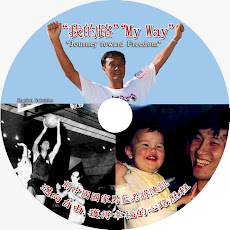


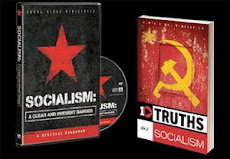




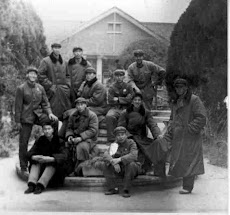


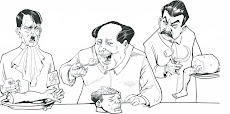
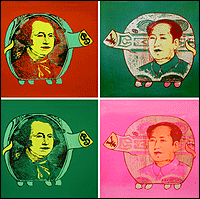
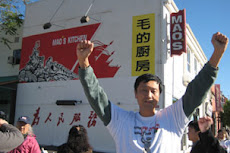













No comments:
Post a Comment